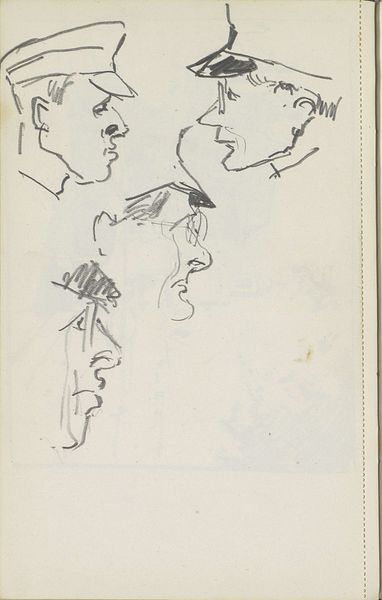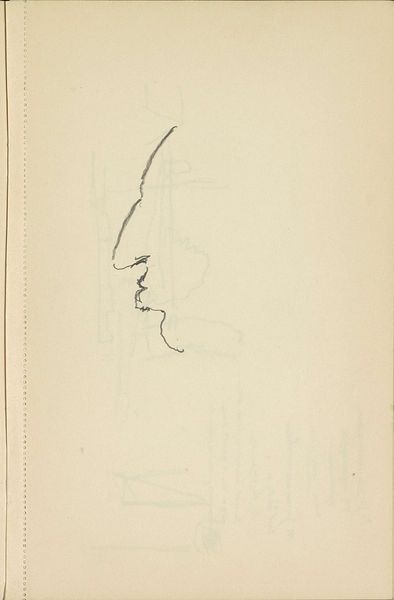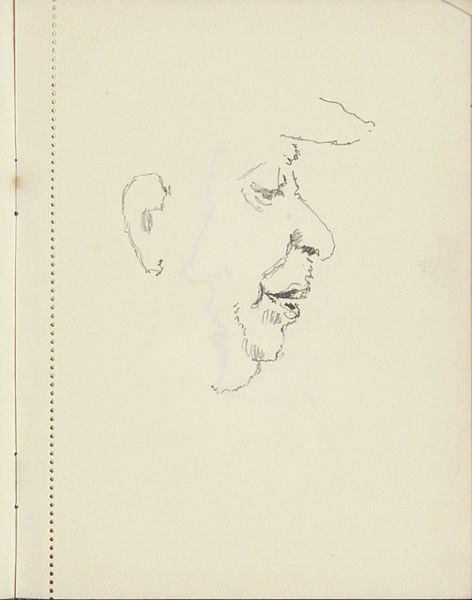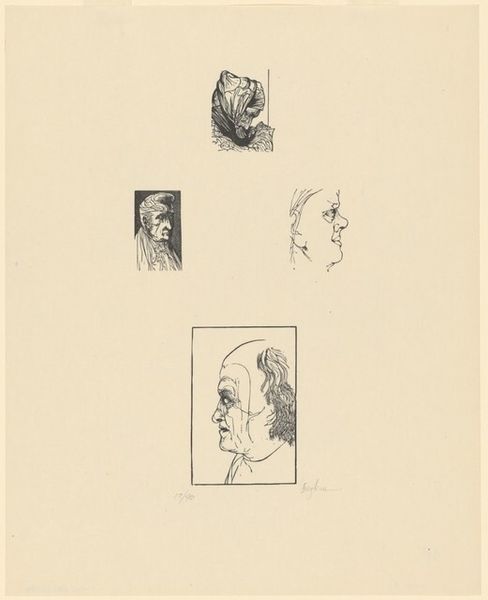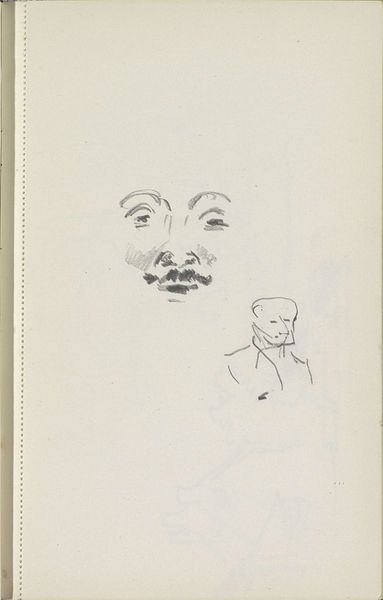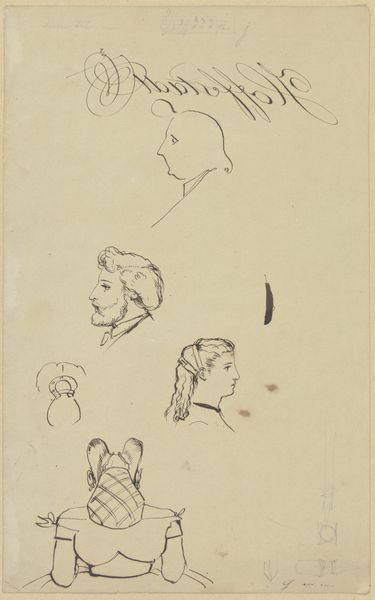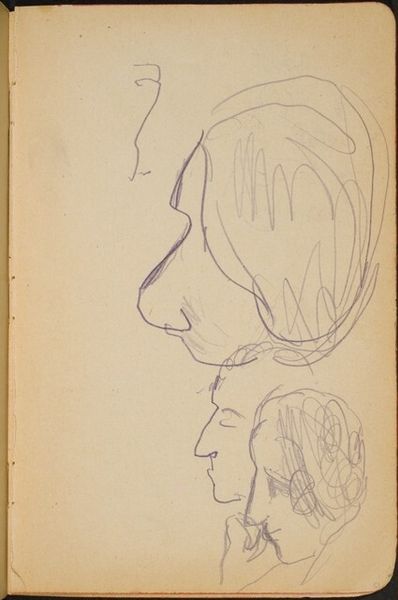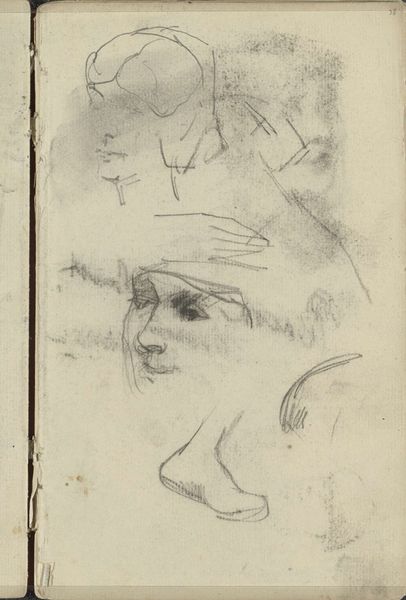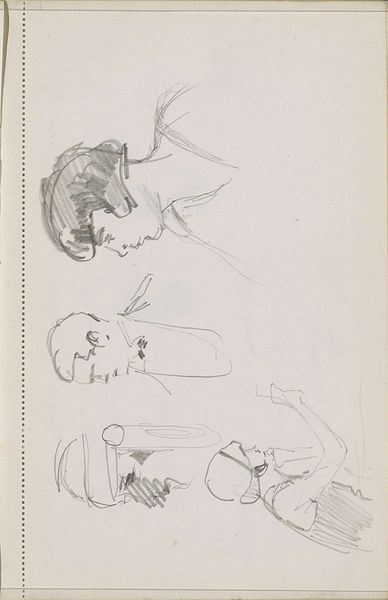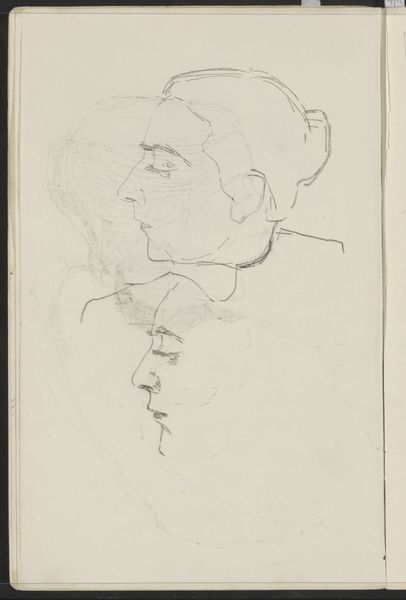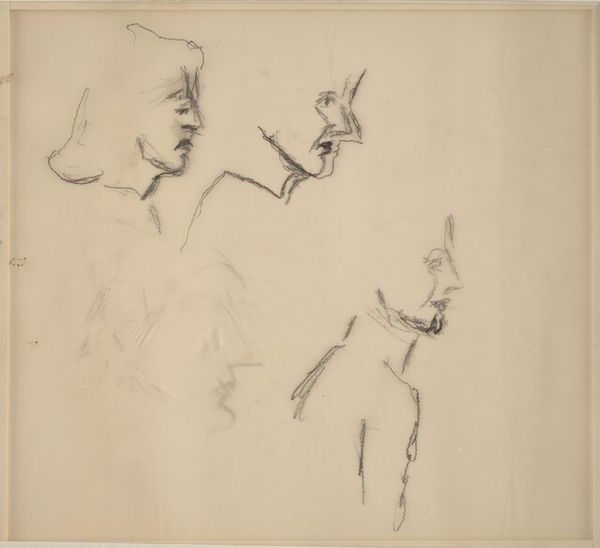
drawing, pencil
#
portrait
#
drawing
#
ink drawing
#
figuration
#
pencil
#
realism
Copyright: Rijks Museum: Open Domain
Curator: Here we have a sheet of studies, primarily faces in profile, by Cornelis Vreedenburgh, likely made sometime between 1890 and 1946, while the artist was active. It's rendered in pencil and ink. Editor: Sparse and intimate. It feels like glimpsing into a very private sketchbook. The lines are so delicate, almost hesitant, yet there’s a starkness too in the plainness of the subject matter and the minimal detail. Curator: Given Vreedenburgh's commitment to Realism, this simplicity serves as a kind of documentary of the individual, absent the filters or flattering portrayals often preferred at the time. This stripped-down aesthetic might reflect the burgeoning Modernist interest in directness and honesty, questioning traditional conventions around portraiture and the male gaze. Editor: The various profiles, slightly overlapping, carry an interesting tension. It seems almost like they're characters in dialogue. The severe features and slightly stooped posture call to mind the weight of social expectations during the era, which in turn suggests themes of repression. Curator: It certainly provokes a narrative beyond pure representation. The stark realism emphasizes, rather than conceals, the lines etched by time and the imposition of cultural burdens. The artist, here, engages in a kind of sociological study using art to explore societal pressure. It begs us to consider questions surrounding class, identity, and performativity. Editor: Vreedenburgh's concentration on faces brings to mind archetypes that keep reappearing. Perhaps it's a matter of revisiting these facial figures over and over. It suggests both recognition of inherited history, but maybe also personal histories of longing and regret. Curator: That brings another point; it highlights a tension between art historical context, the specific life circumstances that molded him and perhaps those he portrayed. As viewers, we have to wrestle with how much of what we see is reflection of reality or projection. It all really depends how deep into the artist's social environment and worldview we are able or want to delve. Editor: This experience allows us to imagine so many stories between the lines! Curator: Agreed. An exercise in active contemplation of both art and lived experience.
Comments
No comments
Be the first to comment and join the conversation on the ultimate creative platform.
